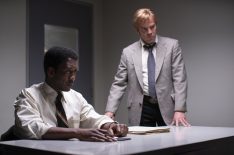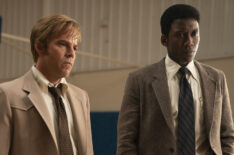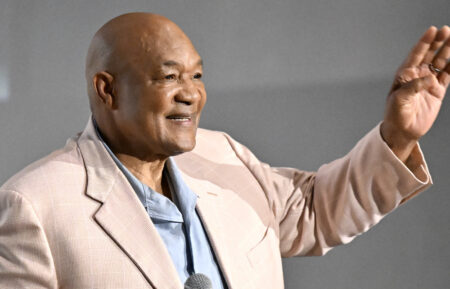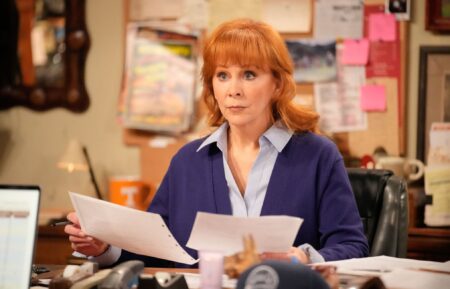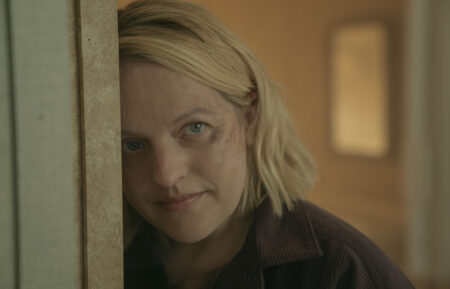‘True Detective’ Episode 2: Letting Go Is the Hardest Part (RECAP)
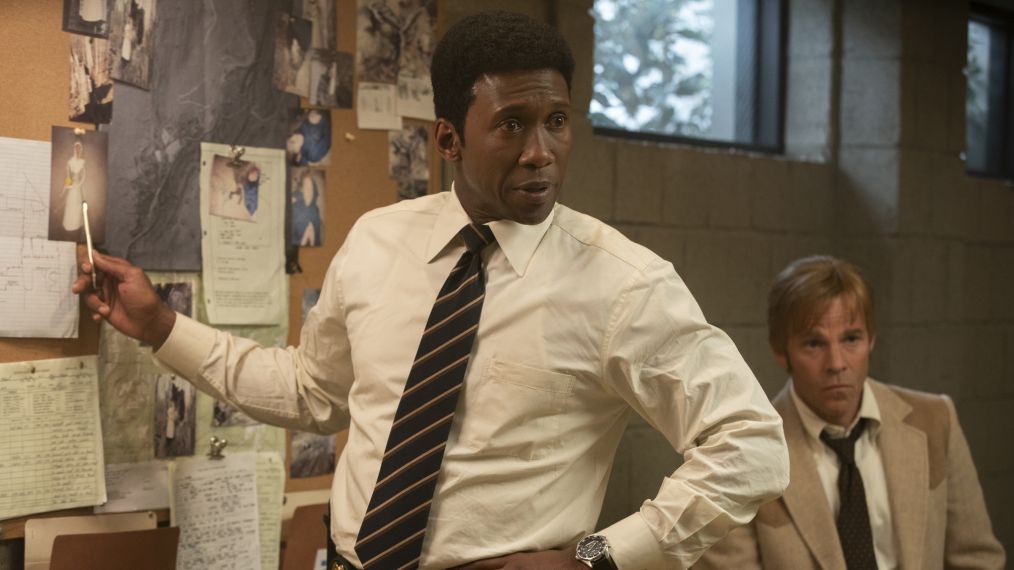
Spoiler Alert
After the first episode of True Detective set the murky vibe and introduced the third season’s mystery, the second installment, “Kiss Tomorrow Goodbye,” is more of a meditative slow-burn. We focus on the deteriorating mind-state of Wayne (Mahershala Ali), while the investigation pings from suspect to suspect, slowly teasing details in both the past and the present. Whether or not we can trust those details is an important question we have to ask ourselves.
The case of the Purcell children has come to define Wayne’s life. It serves as his anchor, one that keeps him grounded to reality but also restricts him from moving forward. “You ever been someplace you couldn’t leave, but couldn’t stay at the same time?” asks Woodard (Michael Greyeyes), the local Trash Man who is interrogated about the crime. The gloomy detective doesn’t respond to the fellow ‘Nam vet, but by the end of the episode, we know the answer. Wayne is trapped in a limbo of his fragmented memories.
In 2015, Wayne tells his son Henry (Ray Fisher) that the case helps him remember his life. Retreading the investigation and discussing it with the “True Criminal” documentary crew is not just the act of an obsessive mind that can’t let go, it is a form of regression therapy. And yet the fractured state of these memories makes them wholly unreliable, not just for Wayne, but for the audience, and that could turn out to be the major strength of True Detective‘s storytelling in season three.
For example, when Elisa (Sarah Gadon), the documentary director, asks Wayne if he ever felt his theories were discounted because of his race, he tells her no. However, in 1980, after prosecuting attorney Jeff Kent (Brett Cullen) ignores Wayne’s advice and goes public with vital information, he berates Roland (Stephen Dorff) for not backing him up, implying the higher-ups would have listened had it come from a white detective. It’s unclear if Wayne just didn’t want to admit this to the ratings-chasing Elisa or if it’s something he’d genuinely forgotten due to his dementia. That’s what makes this splintered narrative so intriguing.
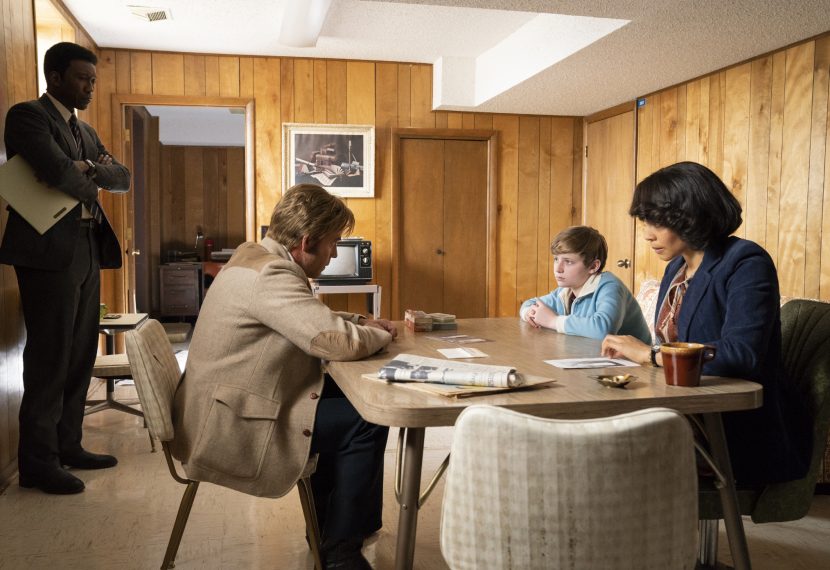
Photo: HBO
The dead-ends in Wayne’s memories are reflected in the empty paths he keeps following during the 1980 investigation. All the suspects he and Roland interview lead to nowhere. Woodward, whose wife and kids left him after he returned from the war, may be a sketchy figure to the townsfolk, but Wayne and Roland have no evidence to suggest he was involved in the death of young Will or knows the whereabouts of Julie.
Later, at Will’s funeral, Lucy Purcell’s (Mamie Gummer) creepy cousin Dan (Michael Graziadei) gives the detectives the short shrift. He confesses to leaving the Playboys in the boy’s bedroom but denies having anything to do with the crime, claiming he was at a bar the night the kids went missing. Wayne and Roland also question the emotionally distraught grandparents but are cut-off by Tom Purcell (Scoot McNairy), who we learn may not be Julie’s biological father.
The only solid lead arrives after Wayne asks Amelia (Carmen Ejogo) to ask her students if they recognize the spooky straw dolls. One boy remembers that Julie received one of the dolls on Halloween while they were trick-or-treating. He also recalls seeing Julie talking to two unknown adults wearing ghost sheets. Wayne shares his desire to keep this info under wraps so as not to tip off the killer. But this big clue is blown when Kent reveals the details in a public press conference, which only serves to stir up panic and paranoia.
Frustrated and angry, Wayne and Roland chase down a child sex offender who recently moved to the area. It seems clear early on that neither cop believes he is the culprit, but they still take pleasure in beating him to a bloody pulp and threatening him with prison rape. “You will bleed black c**k,” Wayne tells him. There is most certainly a twisted side to the man who was nicknamed Purple Hays by his fellow ‘Nam soldiers. He also does a surprisingly good impression of a lightsaber.
Wayne leans further into his dark, lone-wolf persona across this episode, especially in his barside chat with Amelia. The two open up to one another about their backgrounds. He hunts. She’s a vegetarian. He fought in ‘Nam. She’s anti-war. She wants to be a writer. He’s dyslexic and more of a comic book guy – his favorites obviously being Batman and the Silver Surfer (two reclusive vigilantes). It’s easy to see what Wayne means in 2015 when he tells his son, “She and I always had different ideas.”
Despite these differences, there are also commonalities between the brooding detective and the friendly teacher. Both profess their desire not to get married – with Amelia admitting to backing out of a seven-month engagement. And both have a self-confessed “crazy” side. Wayne wears a clip-on tie because he’s preoccupied with the thought of being strangled with it. While Amelia reveals she sometimes takes trips to St. Louis where she pretends to be a completely different person. It’s fitting that these two marriage-opposing crazies ended up married with kids.
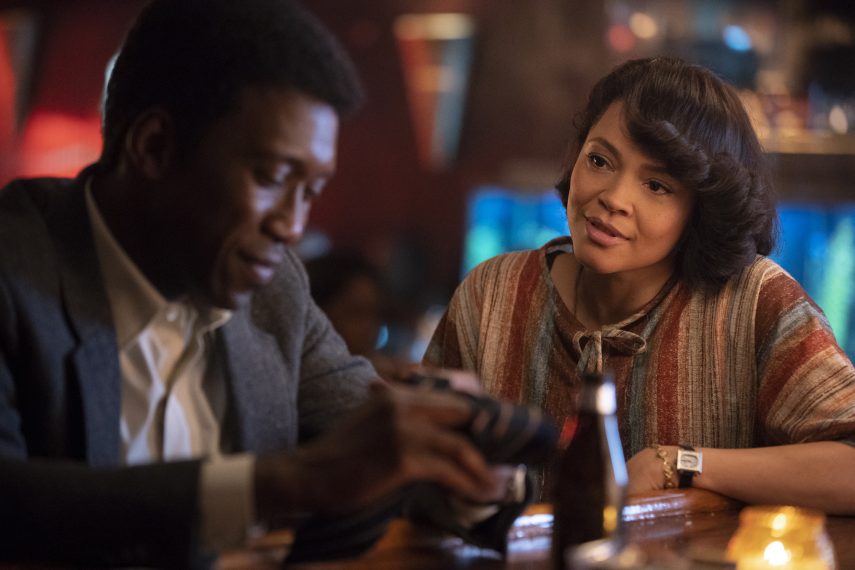
Photo: HBO
Towards the closing moments of the episode, Wayne and Roland are called back to the Purcell house after the family receives an ominous note. The message, made up of letters cut from a magazine, claims that Julie is “in a good place and safe” and warns “do not look, let go.” But letting go is what Wayne finds so difficult, even when his mind is trying to let go for him, he battles against it.
In 1990, all Wayne can think about is Julie still being alive, but the lawyers are not forthcoming with details, at least at first. Alan Jones (Jon Tenney), one of the lawyers who used to work for Kent, does later meet up with Wayne and share some info. He tells him that they don’t know if Julie’s prints mean she was part of the robbery or a customer at the store. Jones also mentions he has “an appointment” with Roland, remarking that Wayne’s former partner “has done well for himself.” We don’t yet know what Roland has become, but it doesn’t appear the Purcell case has plagued him in the same way it has Wayne.
Wayne’s obsession with the case has affected his family life. In 1990, he’s inattentive to his young kids as his mind instead lingers on the child he was unable to find ten years ago. The Hays children grew up around the case; their father as the lead investigator and their mother writing a book about it. But Amelia was able to put it behind her and move on, writing six novels after her true-crime bestseller. Wayne, however, never let it go, leading to an estranged relationship with his daughter.
At the end of the episode, 2015 Wayne is transposed from a family dinner with his grandkids to the street where the Purcell house used to be. He stands on the dark, empty road in his pajamas and slippers, a look of confusion and fear on his face. Ali, who is fantastic again throughout the episode, sells the despair and discomfort beautifully. Wayne is not only lost in his memories, which are now crashing into each other, but he is also displaced in time. He can’t let go of the past but can’t grab hold of it either.
Extra Case Notes
-The news about the straw dolls leads to further panic about Satanic rituals which I talked about in the premiere recap and how it related to the West Memphis Three case. In this episode, Elisa ties the dolls to pedophile rings and references the Franklin scandal which began in June 1988 in Omaha, Nebraska. The Franklin scandal was later discredited as a hoax.
-Elisa also makes reference to the “crooked spiral” which is a nod to season one. The symbol was carved into the back of Dora Lange and was often seen in Rust Cohle’s visions. Whether this has a deeper meaning or is just a neat reference for True Detective fans remains to be seen.
-Sticking with Elisa, she drops a couple more nuggets of info when interviewing Wayne. First, she asks Wayne about him leaving the force in 1990 and then she asks for his opinion on the theories to do with “Julie and her father.” Wayne doesn’t answer these questions so we’re none-the-wiser to what happened in either scenario. We also don’t know if the “father” means Tom or Julie’s biological dad.
-Major props to Scoot McNairy for his performance as Tom Purcell. He totally inhabits the role of the broken and tormented father. “I can’t sleep and I can’t wake up,” is a heartbreaker of a line and McNairy delivers it with such emotion.
-Not much action from the purple Beetle teens in this episode but we do see a couple of them arguing in the background as Amelia asks around about the straw dolls.
-Wayne’s daughter, Rebecca, is now a musician living in LA, according to Henry. Apparently the last time she saw her dad was at her mom’s funeral.
True Detective, Season 3, Sundays, 9/8c, HBO
From TV Guide Magazine
How Hulu's 'Mid-Century Modern' Is a 'Golden Girls' for Our Times
Settle in for some older and bolder laughs with the BFFs of a certain age in the new comedy starring Nathan Lane, Matt Bomer, and Nathan Lee Graham. Read the story now on TV Insider.

